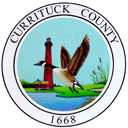What’s That Weird Worm?
go.ncsu.edu/readext?739040
en Español / em Português
El inglés es el idioma de control de esta página. En la medida en que haya algún conflicto entre la traducción al inglés y la traducción, el inglés prevalece.
Al hacer clic en el enlace de traducción se activa un servicio de traducción gratuito para convertir la página al español. Al igual que con cualquier traducción por Internet, la conversión no es sensible al contexto y puede que no traduzca el texto en su significado original. NC State Extension no garantiza la exactitud del texto traducido. Por favor, tenga en cuenta que algunas aplicaciones y/o servicios pueden no funcionar como se espera cuando se traducen.
Português
Inglês é o idioma de controle desta página. Na medida que haja algum conflito entre o texto original em Inglês e a tradução, o Inglês prevalece.
Ao clicar no link de tradução, um serviço gratuito de tradução será ativado para converter a página para o Português. Como em qualquer tradução pela internet, a conversão não é sensivel ao contexto e pode não ocorrer a tradução para o significado orginal. O serviço de Extensão da Carolina do Norte (NC State Extension) não garante a exatidão do texto traduzido. Por favor, observe que algumas funções ou serviços podem não funcionar como esperado após a tradução.
English
English is the controlling language of this page. To the extent there is any conflict between the English text and the translation, English controls.
Clicking on the translation link activates a free translation service to convert the page to Spanish. As with any Internet translation, the conversion is not context-sensitive and may not translate the text to its original meaning. NC State Extension does not guarantee the accuracy of the translated text. Please note that some applications and/or services may not function as expected when translated.
Collapse ▲What does 2020 have to offer us next? From COVID-19 to murder hornets, this year has been full of challenges and media headlines. Most recently, images and articles have come out on the invasive hammerhead worm. While the name sounds menacing, don’t fret, N.C. Cooperative Extension, Currituck County Center is here to provide research-based information on this new viral story.
Hammerhead worms are a member of the genus Bipalium, a group of predatory flatworms. These worms are invasive to the United States and originate in tropical environments in southeast Asia¹. Reports of hammerhead worms in the U.S. started emerging as early as 1901², and were prevalent enough to be used in classroom experiments in Louisiana by the 1930s³. Growing up to a foot long, Bipalium are characterized by their shovel-shaped head where they get their characteristic hammerhead name4. Similar to the shark, hammerhead worms are predators and feed on soft-bodied planarian such as slugs, earthworms, and other Bipalium5. These worms feed heavily on earthworms and have been reported to destroy entire populations of earthworm farms1. On top of that, hammerhead worms produce a tetrodotoxin, similar to the toxins found in pufferfish, that is thought to be used defensively as well as to subdue earthworms6.

While all that may seem bleak and just another reason to curse 2020, everything is going to be fine. Hammerhead worms have been here for over 100 years and haven’t been a problem yet. That’s due in part to their biology. Bipalium require humid, moist environments. This limits the areas that they can spread to, and explains why images and social media posts come out after heavy downpours. Another factor that aids in invasive species thriving and spreading is lack of predation. While hammerhead worms don’t have any natural predators, they are cannibalistic and anecdotal reports have come out about amphibians that will feed on the worms. Although it’s not much, these two predators can help keep populations from growing unchecked.
In the end, the hammerhead worm is an unusual planarian that you may start noticing on rainy days. These worms are not something to be worried about. If you find a worm you think might be a hammerhead worm, send a picture to Adam Formella, Currituck County Agriculture Extension Agent at adam_formella@ncsu.edu. Just be careful handling the worms as there is little information on their tetrodotoxin’s effects on humans. And please, don’t eat the worms!
If you have any questions or concerns, please contact Adam Formella, Currituck County Agriculture Extension Agent at (252) 232-2261 or by email at adam_formella@ncsu.edu. If you’d like to know more about invasive species, sign up for our Invasive Species Zoom class on October 15, 2020, from 9 to 10 a.m. Register for the free class online
References
(1) Choate P.M., and Dunn R. A. 2015. Featured Creatures: Bipalium kewense Moseley and Dolichoplana striata. Web.
(2) Esser R. P. 1981. Land Planarians (Tricladida: Terricola). Contribution no. 227, Bureau of Nematology, Florida Department of Agricultural and Consumer Services, Division of Plant Industry, Gainesville, Fl.
(3) Dundee D.S., and Dundee H. A. 1963. Observations on the land planarian Bipalium kewense Moseley in the Gulf Coast. Systematic Zoology 12: 36-37.
(4) McClure M. 2014. Invasive Species: Hammerhead Flatworm/Hammerhead Slug. Web.
(5) Ducey P. K., McCormick M., and Davidson E. 2007. “Natural History Observations on Bipalium cf. vagum Jones and Sterrer (Platyhelminthes: Tricladida), a Terrestrial Broadhead Planarian New to North America,” Southeastern Naturalist 6(3), 449-460).
(6) Stokes A. N., Ducey P. K., Neuman-Lee L., et al. 2014. Confirmation and distribution of tetrodotoxin for the first time in terrestrial invertebrates: two terrestrial flatworm species (Bipalium adventitium and Bipalium kewense). PLoS One. 2014;9(6):e100718.




